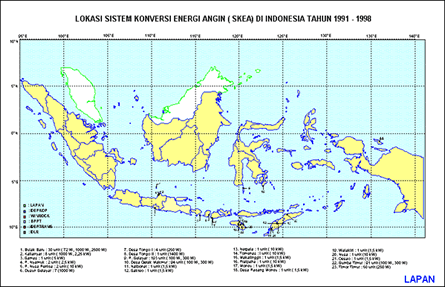Indonesian Government has made a commitment to achieve net zero emissions by 2060 by preparing a road map starting in 2021. There is a plan for the energy transition to clean and renewable energy. This is supported by the abundant new and renewable resources in Indonesia, an energy source from nature that can be used freely, can be renewed, continuously and unlimited.
Indonesia has a great strength and potential in renewable energy sector. The country is able to generate 418 GW from renewable energy sources including hydropower, geothermal, wind, solar panel, biofuel, and ocean current. Related to hydropower, Indonesia has 4,400 large and medium rivers and has the potential to generate electricity up to 94.35 GW (75 GW on a large scale, 19.35 GW on a small scale). Meanwhile, until July 2020, the implementation has only reached 6 GW (8.1%). This means that there is still a large capacity that can be optimally developed.
Solar power is one of the forms of RE that will dominate Indonesia’s electricity mix, including solar rooftop systems in future and Indonesia has a solar rooftop potential of 32.5 GW. The government has regulated the implementation of rooftop panels since 2018, and is targeted to reach an installed capacity of 3.6 GW by 2025.
Indonesia’s government has 3 ongoing priority programs to encourage PV development:
1. Rooftop Solar System with a target of 3.6 GW capacity.
2. Development of large-scale Solar Power Plants with a capacity of 5.34 GW.
3. Floating Solar PV projects in 375 locations with a total capacity of 28.20 GW.
Cirata’s Floating Solar PV is the largest in Southeast Asia with a capacity of 145 MW and is ready to operate in 2022. In addition, Batam will build the world’s largest floating solar PV with a total capacity of 7 GWp.
The development of Covid-19 in Jakarta is still well controlled. Indeed, there was a high increase in COVID cases due to rapid transmission by the Omicron variant in early February 2022, but the majority of infected patients are asymptomatic and mild symptoms. We are very grateful to the Indonesian government for taking extraordinary anticipatory steps to control the spike in new cases of Omicron COVID-19. Thus, the international exhibition can be safely held at this time in March 2022.
PLN converts 499 MW of Diesel Power into Renewable Energy
PT Perusahaan Listrik Negara (PLN) will convert 499 megawatts (MW) of Diesel Power Plants (DPP) to Solar Power Plants (SPP) and other renewable energy-based plants gradually until 2025.
In a press release quoted Tuesday (8/2), Wiluyo Kusdwiharto, Director of Mega Projects and NRE of PLN, said that the energy conversion from DPP to SPP would be performed through a hybrid mechanism with the existing DPPs.
The transition will be carried out in two phases.
1. The first phase, PLN will convert up to 250 MW of Diesel Power Plants in several locations to Solar Power Plants. The conversion will employ a baseload Solar PV Plant equipped with Battery Energy Storage System (BESS) to maintain electricity flow for 24 hours non-stop. During the first phase of conversion, the installed capacity might reach 350 MWp.
2. In second phase, PLN will convert the remaining DPP of about 249 MW to other Renewable Energy plants, in accordance with the superior natural resources in the area. This project is targeted to be completed in phases in 2025 to support the achievement of the 23% NRE mix target.
Currently, Indonesia needs large scale of Solar PV System and Battery Energy Storage System (BESS) to meet the transition to green energy. For this reason, Solartech Indonesia 2022 and Battery & Energy Storage Indonesia 2022 will be an ultimate opportunity to expand the PV business in Indonesia.
For information, please visit www.powergen-exhibition.net


